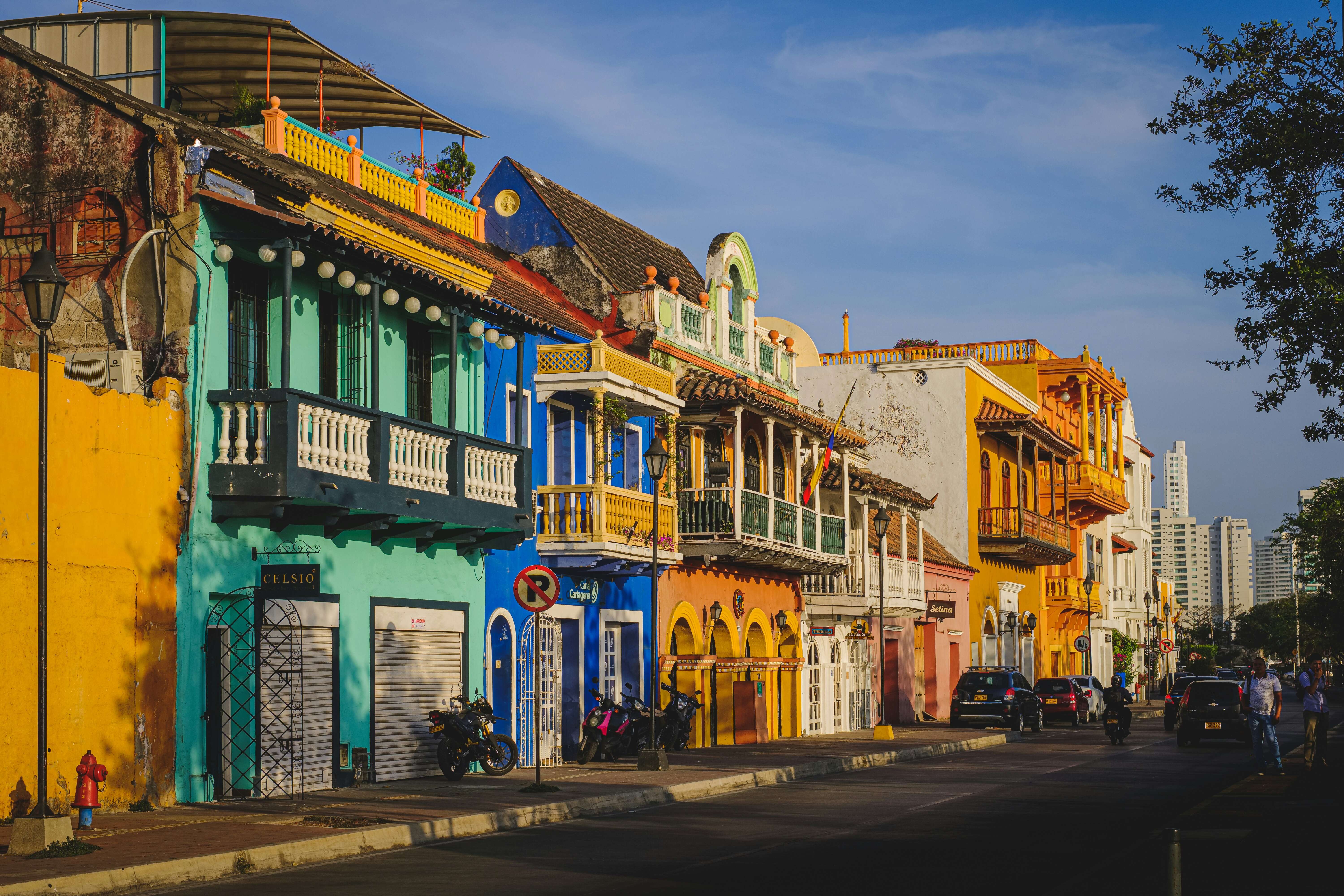Plan Your Best Trip Ever!
"Cartagena"

Imagine a city where the past and present merge in a vibrant display of colors, sounds, and flavors. Cartagena de Indias, in Bolívar, Colombia, is precisely that—a place where every cobblestone tells a story, and the air is thick with the scent of the sea and the history it has witnessed. This enchanting city, founded in 1533 by Spanish conqueror Pedro de Heredia, has been a crucial port in the Caribbean, serving as a link between Spain and its colonies in South America. The rich history of Cartagena is evident in its stunning colonial architecture, formidable walls, and the iconic Castillo de San Felipe de Barajas, built to protect the city from pirates and invaders.
But Cartagena is not just a relic of the past; it's a living, breathing city where cultures have blended over centuries. The Afro-Caribbean influence is palpable in the music that fills the streets, the dance styles that have become synonymous with Colombian identity, and the exquisite culinary traditions that make Cartagena a food lover's paradise. The city's cultural calendar is packed with festivals and events that celebrate its diverse heritage, including the famous Cartagena International Film Festival and the Hay Festival, which attract artists, writers, and thinkers from around the globe.
The demographics of Cartagena Bolívar reflect this melting pot of cultures. With a population of over 1 million inhabitants, the city is a mix of Afro-Colombian, Indigenous, and European descendants. This diversity is reflected in the languages spoken, religious practices observed, and cultural traditions celebrated throughout the city. Despite modern influences and the influx of tourists, Cartagena's communities have preserved their ancestral customs, offering visitors a glimpse into the soul of Colombia.
The heart of Cartagena's historical significance lies within its well-preserved colonial district, known as the Walled City or "Ciudad Amurallada." Here, time seems to stand still amidst the brightly colored buildings, flower-filled balconies, and narrow streets that lead to quaint plazas. Each plaza has its own story, often tied to the statues that stand in their centers, commemorating heroes of independence or pivotal moments in Cartagena's storied past. Walking tours through these cobblestoned streets offer insights into the colonial era, piracy, the slave trade, and the city's strategic military importance.
Outside the walls, the modern face of Cartagena unfolds in neighborhoods like Bocagrande and El Laguito, where skyscrapers and resorts line sandy beaches, offering a stark contrast to the historical district. Yet, even here, history is never far away. The Popa Convent, perched atop the only significant hill in Cartagena, offers panoramic views of the city and a serene retreat within its 17th-century walls.
Perhaps one of Cartagena's most remarkable aspects is its resilience. The city has faced numerous sieges and pirate attacks throughout its history. Still, it has always emerged stronger, preserving its cultural heritage and historical sites for future generations. This resilience is celebrated every November 11th on Independence Day when Cartagena's streets come alive with parades, music, and dancing.
The cultural wealth of Cartagena extends beyond its historical sites and festivals into its daily life. The city's culinary scene is a testament to its cultural diversity, offering everything from traditional Colombian dishes to Afro-Caribbean seafood specialties. Local markets like Mercado de Bazurto are a sensory overload, where visitors can experience the real Cartagena amidst stalls selling exotic fruits, fresh fish, and vibrant textiles.
For those interested in art, Cartagena does not disappoint. The city boasts numerous galleries showcasing contemporary Colombian artists alongside traditional crafts. Street art in neighborhoods like Getsemaní tells stories of social change and community pride, making the city itself a canvas for creative expression.
No visit to Cartagena would be complete without experiencing its natural wonders. The Rosario Islands, a short boat ride from the city, offer pristine beaches and coral reefs teeming with marine life. Closer to shore, the mangroves of La Boquilla provide a unique opportunity to explore ecosystems crucial to local fisheries and bird populations.
In conclusion, Cartagena Bolívar is more than just a destination; it's an experience that stays with you long after you've left its shores. The culture and history of this magical city are woven into every street corner, plaza, and beach, inviting visitors to immerse themselves in its vibrant life. And when you're ready to explore all that Cartagena has to offer,
Michelle Fortner can help you craft an unforgettable journey to this enchanting Colombian gem.
"Cartagena"
 Michelle Fortner
Michelle Fortner
Sign up for our newsletter to learn about the latest product news and deals. Also receive exclusive offers, contest details and giveaways.